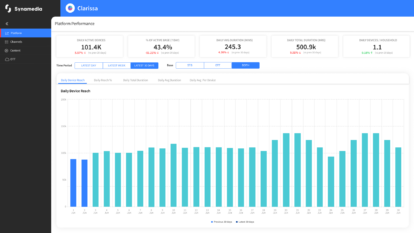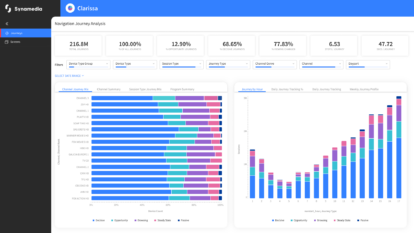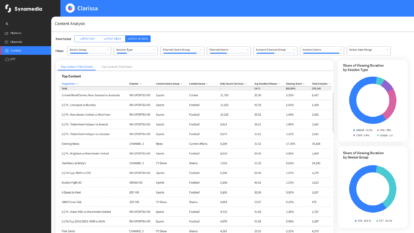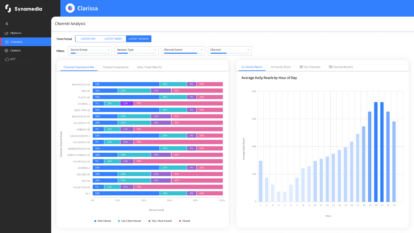A look back: when TV was local and we took it for granted
If you grew up in London, UK, (and you are as old as me), you’ll remember tuning into Channel 3 and watching Carlton and London Weekend TV. What we probably didn’t realise at the time was that our Northern cousins had a different service on ‘Channel 3’; they had Granada instead. These were just two of several independently owned regional broadcasters that eventually merged in the early 2000s into the national ITV network we know today.
Back then, regionalisation came naturally. In the UK, we were lucky. We had local news, local presenters and content on both BBC and ITV, and it was in the English language most of us spoke.
Why regional content still matters now more than ever
Now imagine you live in a different country — one with multiple languages, religious beliefs, or local traditions, or the service you get your TV from operates across multiple countries. If your TV service only offers content in a language you aren’t fluent in, or news and weather from another country, or ads for products not available where you live, the experience quickly loses its relevance. Viewers tune out.
Localised content and ads aren’t just a nice-to-have, they are a necessity. From language and tone to weather and local politics, relevance drives engagement. And with today’s global content distribution, the need for smart, scalable regionalisation has never been more important.
Digital disruption and viewer expectations
These days you can watch pretty much whatever content you want, whenever you want, just by searching for it. That moment when your favourite show disappears from your go-to streaming service can feel like a smack in the face. You urgently search the internet trying to find out who has the rights to it now, and within 10 minutes (and probably one new subscription later), you are back to bingeing. Even more extreme, platforms like YouTube, TikTok and social media are delivering good quality, niche video content at scale. I’ve got to admit, a decent chunk of my own video consumption happens on these platforms now, and I know I’m not the only one. The ads aren’t always high quality, but many are surprisingly relevant and have even led me to make (many) purchases.
Traditional broadcasters have launched VOD services, but live TV is still governed by timetables and schedules, and at times it can feel a tad outdated. They are being challenged to compete with a hyper personalised digital world, but at scale.
Making regionalisation work in an IP-delivered world
There are a few ways to tackle regionalisation — some tried-and-true, some cutting-edge.
First, you can keep doing what many broadcasters have done for years: create a separate, full stream for each regional variation and use data like location input or IP address to decide which user sees which stream. If your current setup is working, cost-effective, flexible, scalable enough, feel free to skip ahead!
At the other end of the spectrum, there’s Server-Side-Ad-Insertion (SSAI), but ads are just 30 second content, and come from an ad server instead of a CMS (Content Management System), so more accurately in this case, you can deploy Server-Side Content Insertion. This approach allows you to have a single stream and use markers to insert the content or ads that are relevant to each viewer. The personalisation potential here is almost limitless, as many variations as there are viewers. Plus, because it all happens server-side, there’s no risk of ad blockers or buffering disrupting the experience.
That said, SSAI comes with challenges. It is a solid technical setup, can take time to implement properly, and not all devices handle the markers perfectly. And yes, the viewer’s device needs to be connected to the internet.
Then, there’s the middle ground: Synamedia’s Media Edge Gateway (MEG). It’s designed for publishers who want to regionalise content for groups, rather than individuals, but still want to do it efficiently and at scale. With MEG, content swaps happen just before local transmission, making it a smart, scalable option without the full complexity of SSAI. Regional ads (or content) are inserted at the edge, where a single digital impression can represent multiple viewers in the same location. This approach mirrors formats like DOOH (Digital Out of Home), cinema or digital signage – where one placement reaches many – making non-connected TV inventory look comparable to these high-impact, multi-view environments.
In conclusion, there is really no excuse now not to regionalise your ads or content. The tools are here. It can be done safely, cost-effectively and at scale, and it is a critical step if you want to retain viewers as the industry shifts from traditional TV to hyper-personalised experiences.
About the Author
Sarah Davies is an industry veteran, having worked in Adtech for over 20 years. Her experience crosses Sales, Programmatic, AdOps, Dev and Product Management, with roles held previously at MTV, Warner Media and ITV.
Sarah has assisted publishers during the shift from paper to digital and is now helping Broadcasters through the same transition.
Sarah is currently a senior product manager at Synamedia, working on the Iris platform.












